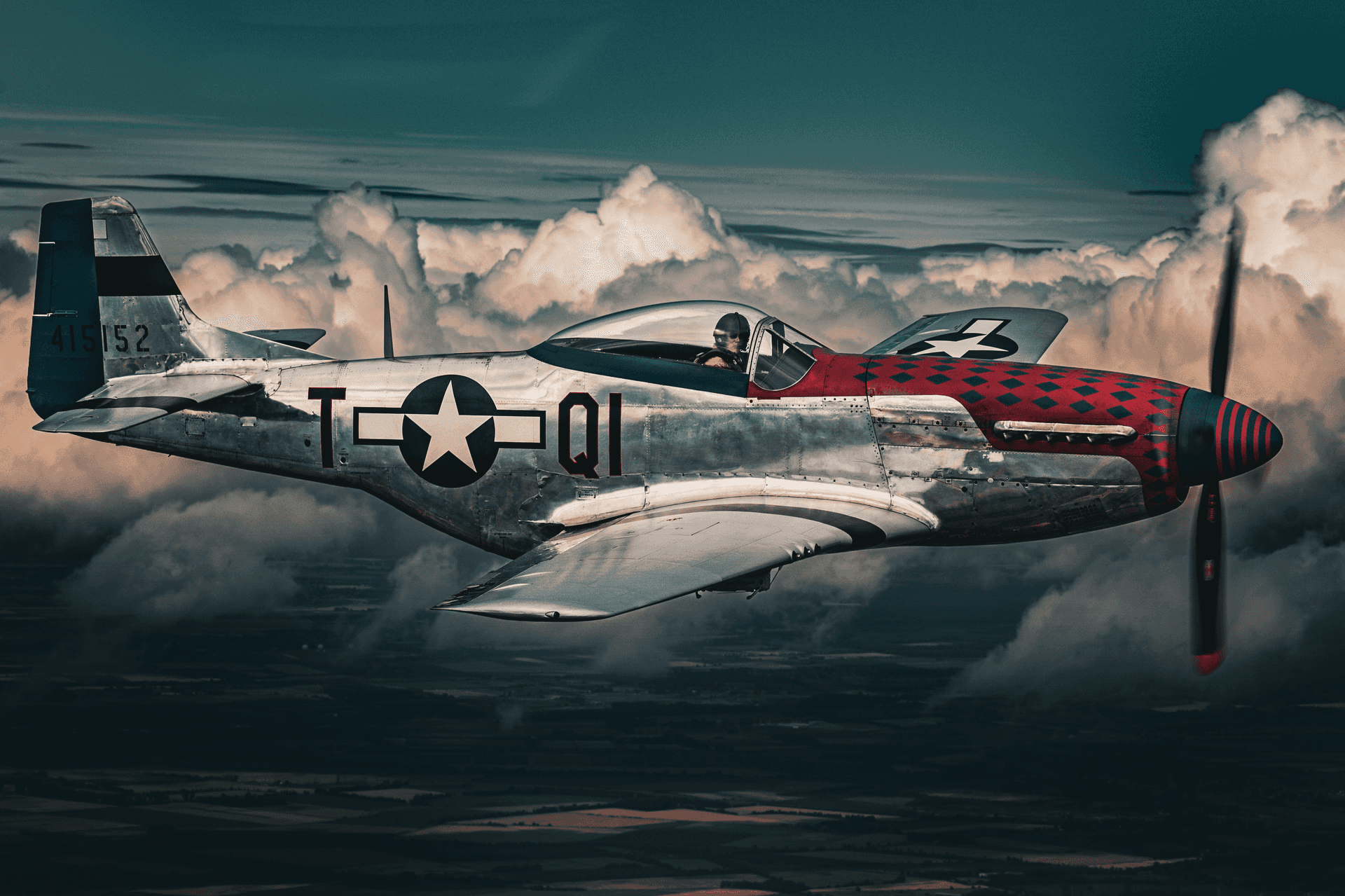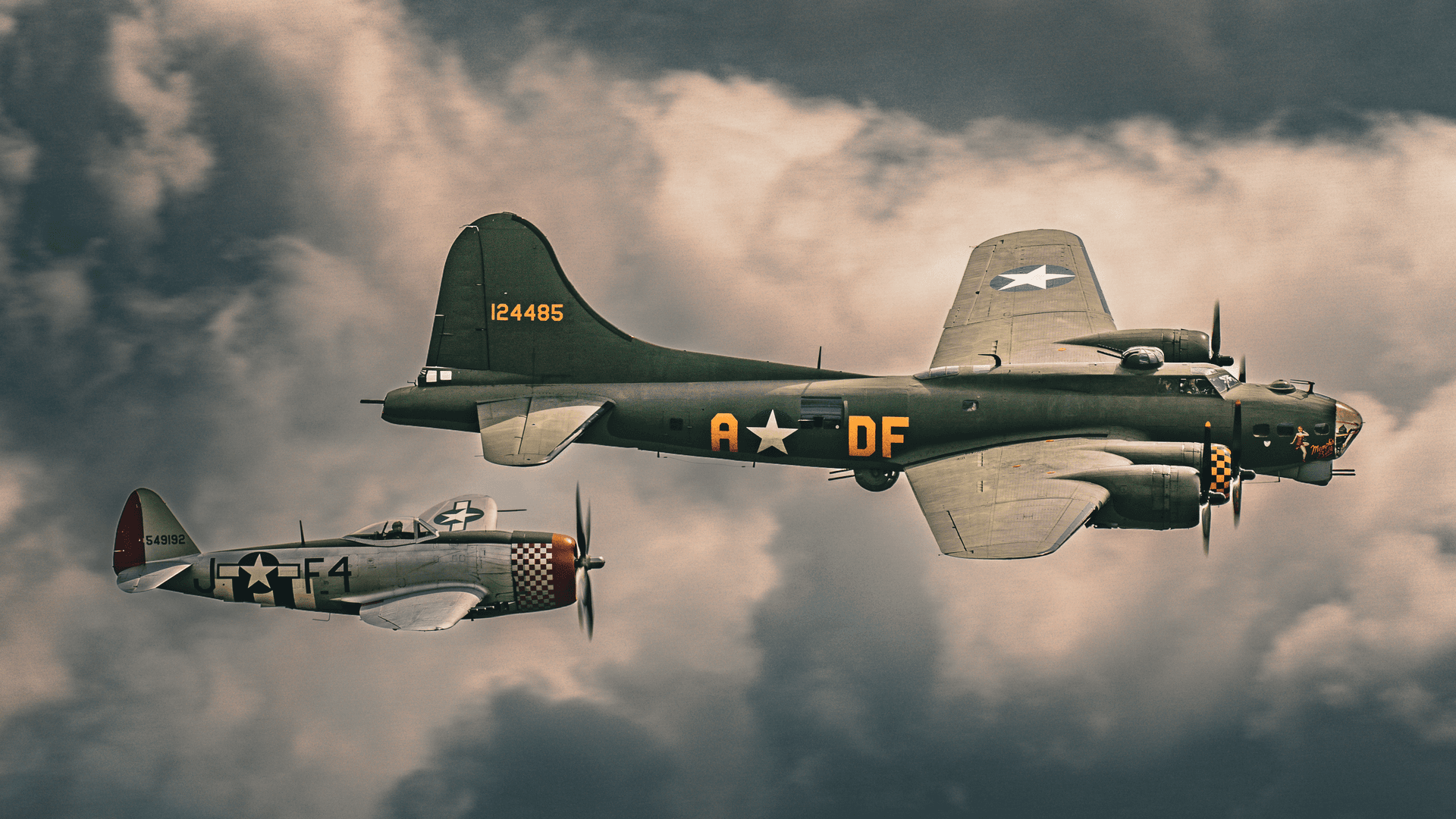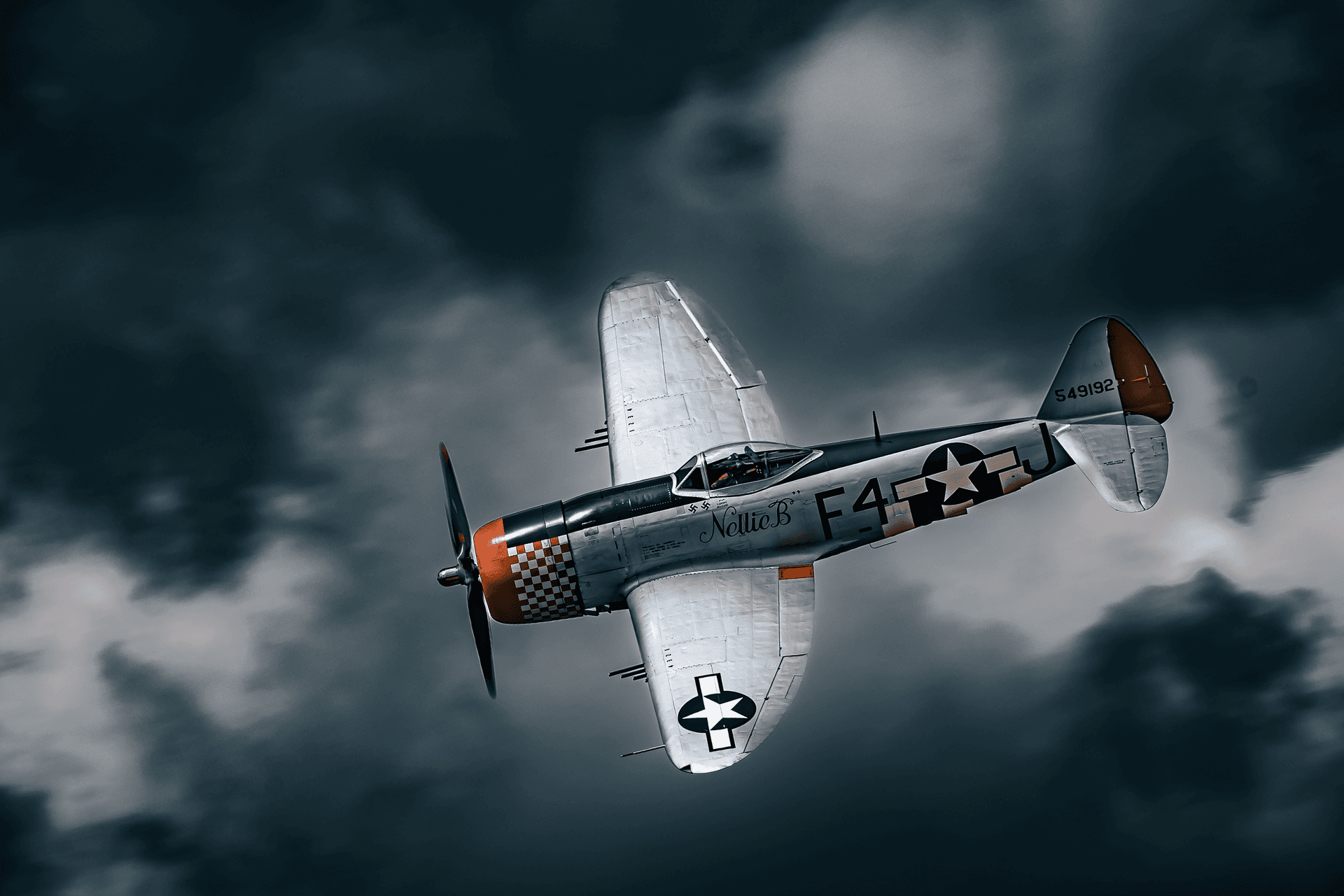
Devastating beauty
The P51 Mustang is a sublime aircraft in its design, its handling and its all-round efficiency as a fighter, bomber and fighter escort.
STORY: 2 minA true all-rounder
It has huge fuel tanks—92 USG in each wing, an 85 USG fuselage tank behind the pilot, plus capacity for two drop tanks carried under each wing. By March 1944, the P51D had enough fuel through the addition of two 75 USG drop tanks to escort bombers (B-17s and B-24s) all the way to Berlin and back, significantly improving the ratio of bomber aircraft returning from a bombing raid.t has huge fuel tanks—92 USG in each wing, an 85 USG fuselage tank behind the pilot, plus capacity for two drop tanks carried under each wing. By March 1944, the P51D had enough fuel through the addition of two 75 USG drop tanks to escort bombers (B-17s and B-24s) all the way to Berlin and back, significantly improving the ratio of bomber aircraft returning from a bombing raid.
Enter the merlin 61
The single biggest improvement in Mustang development came on 30 April 1942, when a Rolls-Royce factory pilot, Ronald W. Harker, made a test flight in a Mustang from Duxford. Harker was instantly impressed and enthusiastically noted that it was 35 mph faster than the Spitfire VB at similar power settings. When asked what improvements he thought could be made, he suggested the Allison V-1710 engine be replaced with a Rolls-Royce Merlin 61. The Merlin was a game-changer.
The first P51B flew on the 5 May, 1943 with a Packard built two stage two speed supercharged Merlin and the results were marvellous. The new Mustang had immense performance in climb, top speed and range—it was over 100 mph faster than the Allison Mustang at 25,000 ft. It was developing into the perfect all-round fighter escort and was significantly less expensive to produce than the other fighters—the P47 Thunderbolt and P38 Lightening. Flying with a top speed of 439 mph, a rate of climb more than 3,000 ft/min (up to 15,000 ft), a service ceiling of 41,800 ft and huge range, it was a dazzling success. The US Army Air Force placed an immediate order for 2,200 of the new P51Bs.
The laminar wing
The Mustang was the first operational aircraft to feature a laminar wing. Unlike a regular aircraft wing which has its thickest point 25% aft of the leading edge, the laminar wing is much more symmetrical, and the thickest point is at 50%. The air flows over the wing more smoothly; it creates less drag and is far more efficient in flight. This was instrumental in adding to the Mustang range which allowed it to penetrate deep into the heart of Nazi Germany and act as a fighter escort.
Meredith-effect
In addition to the laminar wing, the Mustang also had radiators under the belly of the plane, rather than under the wing like the Spitfire. The radiators cool the heat producing Merlin engine with propwash as they lie directly behind the propeller; this keeps the engine cooler on the ground whilst taxiing and makes the engine easier to manage. Additionally, the radiator flue, which although when open increases profile drag, at the same time generates thrust which offsets this additional profile drag. This is called the Meredith Effect, after F.W Meredith, a British engineer working at the Royal Aircraft Establishment in Farnborough who first described this principle in 1936.
More journals
story • 2 minsOur little friends
story • 2 mins





